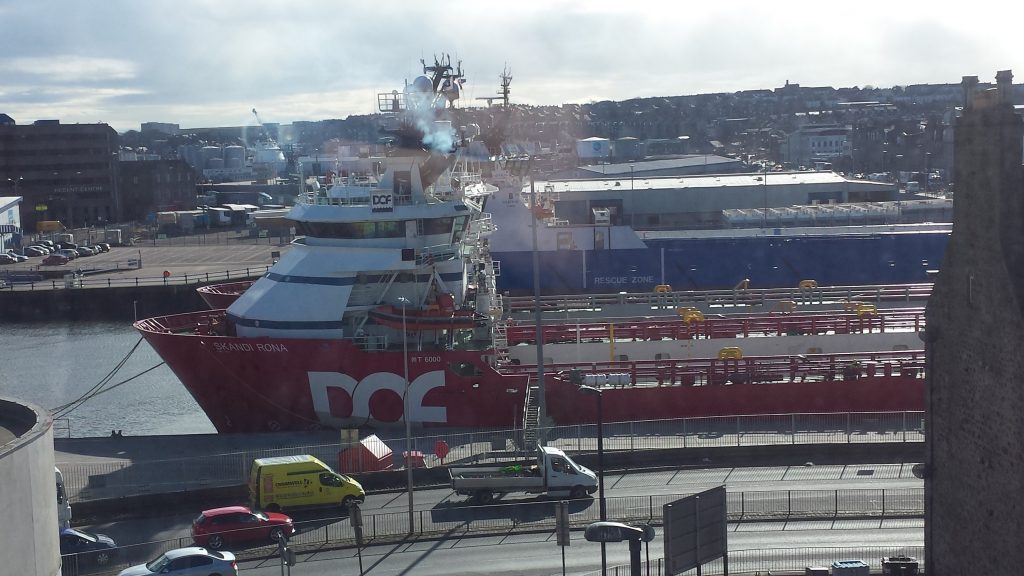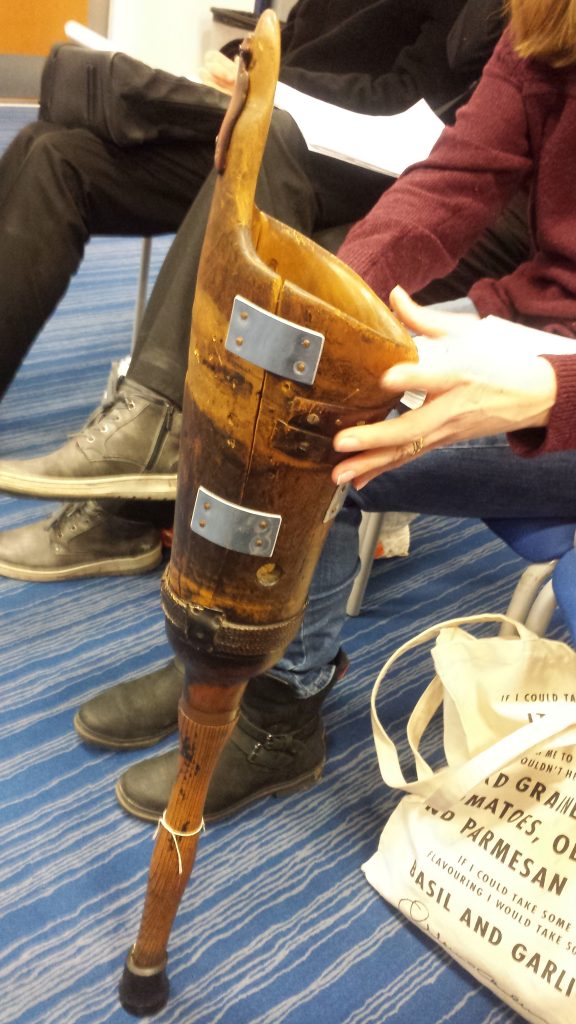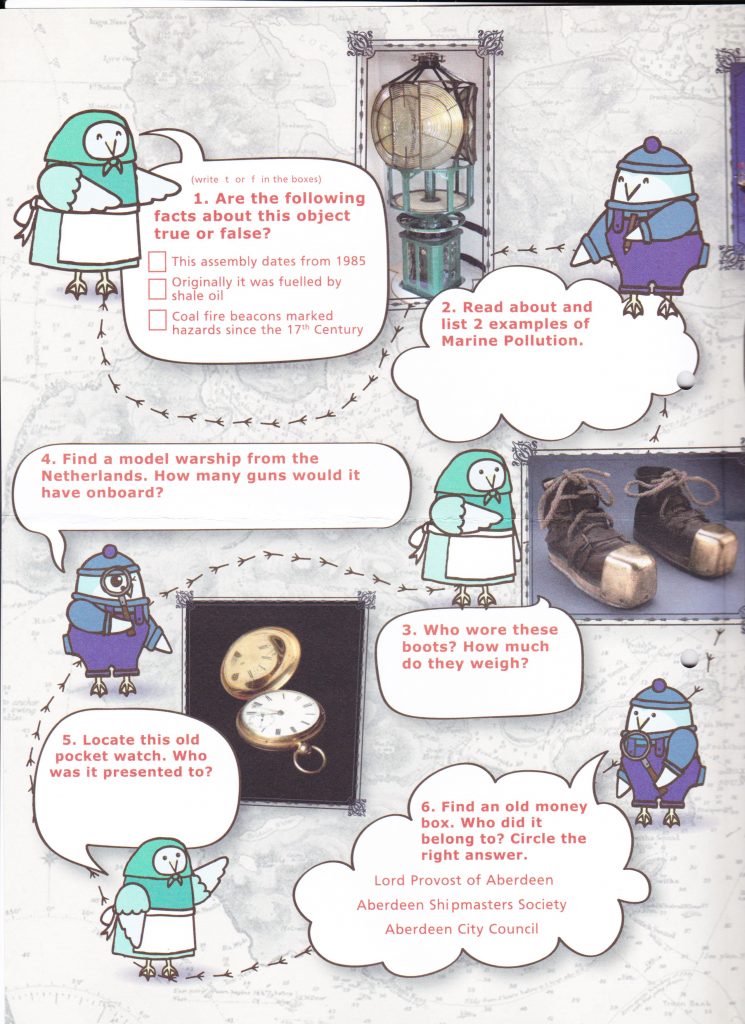Ahoy mateys (I couldn’t resist).
We had a delayed trip to the Maritime Museum due to the strike action that was taking place. I had been to the MM only once in the time I have been in Aberdeen (about 9/10 months) and had enjoyed it although I have to be honest, it’s not really a topic that engages me. However, the exhibits were interesting (even the inevitable oil and gas ones) and there was plenty of interactive stuff to do. I think my favourite overall was probably the video wall showing film of two guys in a tiny rickety looking kayak travelling around the arctic circle, and the ‘have a go’ robotic submersible.

The purpose of the visit was to talk to the education officer about the kind of work she does, in terms of school visits and outreach programmes. The MM has a huge room for educational visits/conferences etc, with storage cupboards all down one side that hold the handling collection. The education officer (who I think was called Lindsay) talked about how her work was curriculum driven and was mostly geared to primary school children; she explained that it was difficult to get secondary schoolchildren in which I found surprising but that due to the heavy workload and many assessments that GCSE age children have to deal with, getting time away from the classroom was quite an effort.
She also explained that the MM was facing staffing problems due to budgetary constraints and that there was supposed to be two members of staff working on the education front, but that presently she was the only member of the learning team.
The subjects covered by the MM are: oil and gas, Aberdeen history, fishing, and inevitably, pirates. Pirates seem to be the subject of choice for many museums in seaside towns as pirates are “cool” and engage the interest of children even though historically, pirates are less than savoury subjects for study.
The programme at the MM is heavily weighted towards object-based learning as one might expect, and there are a variety of items used when children come in that are perhaps not good enough for display but are hard wearing enough to be handled by the public. We were shown a rotary foghorn that was a 120 years old and were given the demonstration that it does indeed still work. We also saw a Victorian Noah’s Ark complete with wooden animals which linked back to our toys and games theme for the May event and the exhibition course. I really liked the wooden animals and would happily have played with that when I was a child. In fact, would probably still play with it now at the ripe old age of 37.
We were shown a prosthetic “peg leg” which would have had fastenings attached to it to keep it firmly in place; as someone expecting an amputation it was quite weird to hold a replacement limb (though of course in my case it’s an arm that will be messing rather than a leg). This object could well be included in the concept of “difficult histories” as it has potential to cause discomfort and upset depending on the prior experience that visitors bring to the museum. While certainly not expecting a complete emotional risk assessment to be done on every item displayed, it is something that should be borne in mind when selecting objects for exhibition.

After talking with Lindsay we were set free into the museum to explore the exhibits and think about how we were present them in an educational context. Several of the class took one of the worksheets designed for smaller children and roamed around the museum completing the questions. On finishing the worksheet it could be handed into reception for checking and then if all is correct a badge is issued. The museum mascots are two seagulls, but I’ll be honest, they look much more like penguins to me.

